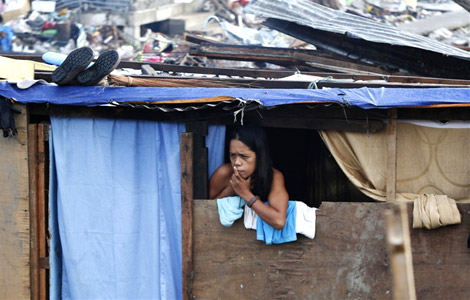

ILO Country Director for the Philippines Lawrence Jeff Johnson said many of these workers are at risk of losing their livelihoods permanently.
"As of today, over 5.2 million workers were affected and have lost their livelihoods either temporarily or permanently. This is close to the entire population of Singapore," Johnson said in a statement.
He noted that even before the typhoon battered the central Philippines, 2.3 million workers in "vulnerable" employment are already living in poverty--accepting or creating whatever work is available in order to survive.
"However, this is not just a matter of numbers. We talk about people living in uncertainty," Johnson said.
He called for the need to increase funding for programs aimed at increasing livelihood.
The ILO is currently coordinating with the Philippine government in the implementation of an emergency employment program in areas severely affected by typhoon Haiyan.
Johnson said ILO has deployed six teams to Tacloban City in Leyte, Roxas City in Panay, Northern Cebu, Negros Occidental, and Bohol in central Philippines which was struck by a 7.2-magnitude earthquake on October 15.
An ILO team has also been sent to Busuanga in the western Philippine province of Palawan.
Johnson said the Philippine government needs help considering the massive reconstruction work that needs to be undertaken.
ILO said it is reaching out to its partners and other donors to support the reconstruction of affected communities in central Philippines and create jobs for displaced workers.







